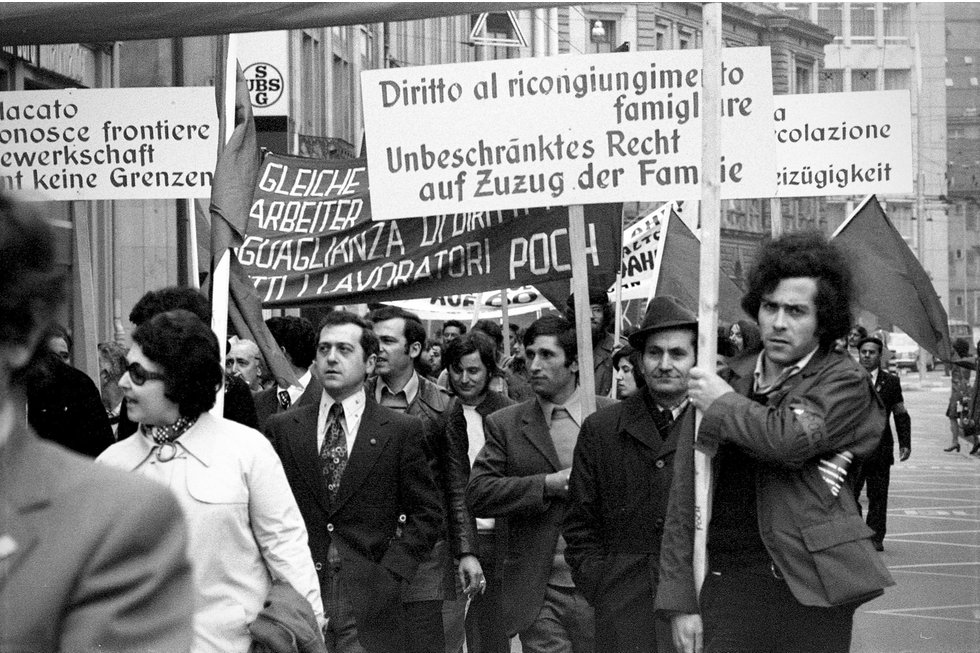A political economy thread on why the Netherlands has become the main entry point for South American cocaine into Europe. 

33 tons of cocaine were seized in the port of Rotterdam in 2019. Last year cocaine amounts with a street value of 5 BILLION EUR were seized. How has it come to this? Let's go to 1980s Colombia.
nltimes.nl/2019/11/11/coc…
nltimes.nl/2019/11/11/coc…
At first, Colombian drug traffickers would channel cocaine into Miami via the Caribbean, using boats or planes flown by people like Barry Seal (there is a movie about him). But then, the amount of product that could be circulated was limited. en.wikipedia.org/wiki/Barry_Seal 



The US government then clamped down on these routes, and the drug road shifted towards Mexico, via Tijuana and Ciudad Juarez. 



With the opening of NAFTA, trade between Mexico and the US skyrockets. The drug trade takes advantage of open trade for large amounts of goods through the border vice.com/en/article/yw7… 

At first, the Colombians paid the Mexicans to transport the product while controlling distribution in the US themselves. Progressively, Mexican cartels ask to be paid in product instead, and assume the transport and distribution. The power balance shifts in favor of the Mexicans.
That means that the profit margin for the Colombians diminishes. Moreover, the US government has a lot of leverage in South America; the risk of extradition is high. The costs and risks are high. bbc.com/news/world-lat…
The Colombians look for other markets. They make a business decision: In Europe, the other large rich drug consumption market in the world, the risk of extradition is lower, the retail price is slightly higher, and the grip of EU governments in South America is much smaller. 

At first, the obvious partner to get the product to Europe is the Calabrian Ndrangheta, which has direct connections with the Colombian paramilitaries, and has networks through Italy and Spain insightcrime.org/investigations… 

But then the main Colombian Ndrangheta contacts are arrested and extradited to the US. The channel dries up.
theguardian.com/world/2020/aug…
theguardian.com/world/2020/aug…
One route emerges as the main alternative: the Ports of Antwerp and Rotterdam, whose importance increases relative to the Spanish-mediterranean route. unodc.org/documents/data… 

Rotterdam in particular handles incredibly high volumes of goods and containers. The volume of goods going through it in 2020 was 436.8 million tonnes. Like NAFTA, huge volumes of trade allow for easier illegal drug exports hidden in the mass link.springer.com/article/10.100… 

In terms of quantities of cocaine seized, Antwerp and Rotterdam are by far the biggest volumes in Europe. And the the quantities seized are probably only a small portion of those circulating. unodc.org/documents/data… 

Of course, the Netherlands also has great logistic and transport networks, combined with a tolerant drug policy. In terms of freight, it is THE entry point for goods into Europe. Not only for drugs, but for everything else. 

It also has very developed financial system which allows for the money from the drug trade to flow into the legitimate economy
https://twitter.com/robertosaviano/status/1421187826775957512?s=20
The sheer volume of goods makes it easy to hide cocaine shipments in the millions of containers. But how do you get the product out of the port? You need the help of local Dutch gangs.
Significant Dutch drug gangs are based in the Moroccan diaspora, which has many young men with limited job prospects. The unemployment rate among people with a Moroccan background in the NL is almost 3x the average cbs.nl/nl-nl/achtergr…. 

The Moroccan diaspora in the Benelux emerged from the labour migration waves from the Moroccan Rif (the biggest cannabis production area in the world) to the Benelux from the 1960s onwards. In the 1970s and 1980s, economic turmoil causes mass unemployment. journals.openedition.org/bagf/3337
If you combine the production of cannabis in the Rif, Morocco-NL immigration networks, unemployment and the Dutch tolerance policy, you have a supply chain.
Existing networks built around cannabis, just like in Mexico, could be used for the channeling of cocaine. This is what happens from 2008 onwards. Dutch gangs get in contact with the Colombian drug cartels. Controlling Rotterdam and Antwerp = sitting on a goldmine.
We know Dutch gangs are in contact with Colombian cartels to organise the transport from Latin America to Europe. A Dutch kingpin was arrested in Medellin in 2020. panorama.nl/artikel/132486…
After arrival, local Dutch gangs bribe port employees and use young men to hide in "hotel containers" to retrieve the product. insightcrime.org/news/nightfall… 

The "extractors" are paid by the kilo. Sometimes they're minors, who risk little in the way of sanctions. rtlnieuws.nl/nieuws/nederla…
The flow of South American cocaine and the huge profits associated has created huge fortunes but also rivalries and a wave of violence. The biggest drug kingpin was arrested in Dubai in 2019 theguardian.com/world/2019/dec…
The violence culminated last summer with the murder of Peter R. de Vries, a crime journalist acting as counsellor for the crown witness in the process against said drug kingpin. nytimes.com/2021/07/15/wor…
Even the prime minister Mark Rutte received extra protection after rumors of an attack from the underworld. nu.nl/amsterdam/6159…
This was partly based on the excellent first episode of season 2 of the podcast Cocainekoorts by @jmeeus12, and notably the great account of the south American connection by @jerrymcdermott.
In the unlikely case that you understand Dutch it's really great nrc.nl/cocainekoorts/
PS: You can read the unrolled version of this thread here:
typefully.com/u/alexandreafo…
typefully.com/u/alexandreafo…
And since you ask, yes there is a Narcos: Amsterdam (sort of):
Useful point from the author of the Mocro Maffia book. Tbh I was also sceptical of the Saviano claim. A cashless economy where tax authorities know everything about everyone, money laundering as such is probably less easy than in other countries
https://twitter.com/WLaumans/status/1486603112802570241?t=HUvj-bt7-gJmgQz_4hatoQ&s=19
Just yesterday: 120 kilos of cocaine intercepted in the port of Rotterdam.
ad.nl/rotterdam/meer…
ad.nl/rotterdam/meer…
• • •
Missing some Tweet in this thread? You can try to
force a refresh

















